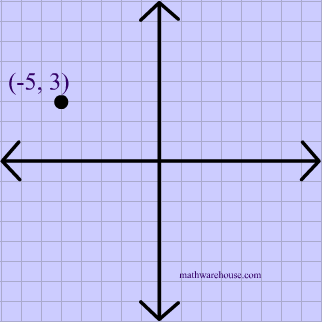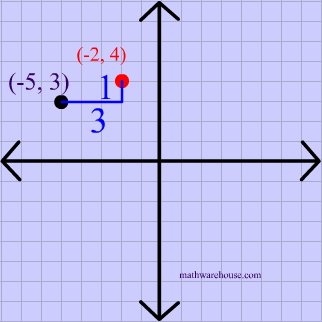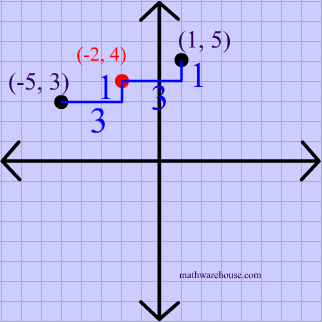Formula for Point Reflection over Origin
A point reflection is just a type of reflection. In standard reflections, we reflect over a line, like the y-axis or the x-axis. For a point reflection, we actually reflect over a specific point, usually that point is the origin .
$ \text{Formula} \\ r_{(origin)} \\ (a,b) \rightarrow ( \red -a , \red -b) $
$ r_{origin} (1,2) = (\red -1 , \red -2) $
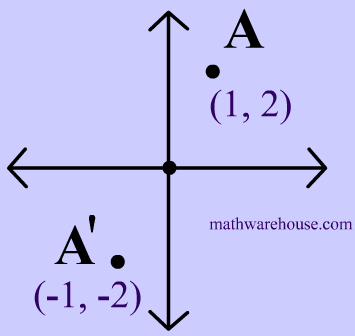
$ r_{origin} (3,4) = (\red -3 , \red -4) $
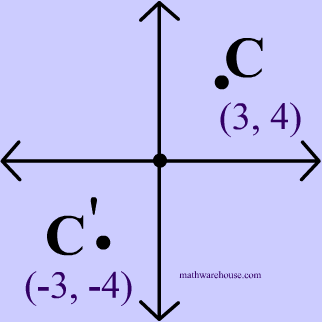
Eample 2 shows the same reflection over origin .
Distance to point of reflection
The distance from the preimage to the point of reflection is equal to the distance from the point of reflection to the image .
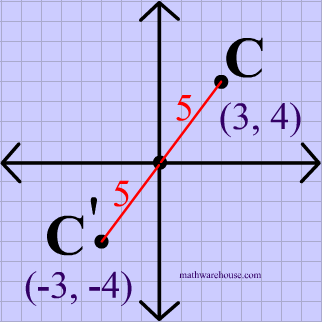
A graph showing a triangle's shape reflected over the origin. The distance from each vertex (and actually each and every single point ) of the preimage to the origin is equal to distance between the origin and each point of the image .
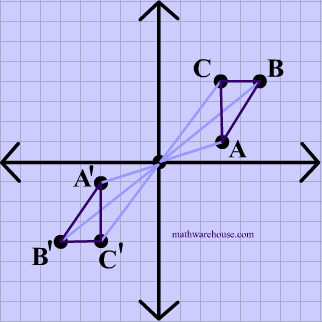
The origin might be the most common point of reflection, but you can use any point. And the same rules apply. The diagram below uses the point $$(1,2)$$ as the point of reflection.
The the distances between each point on the preimage and the point of reflection $$ (1,2)$$ are equal to the distances between $$(1,2)$$ and each point on the image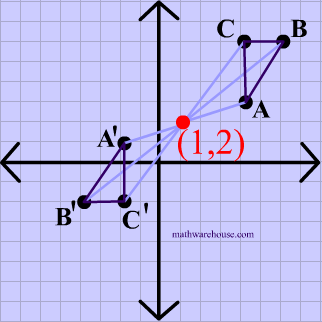
Practice problems like example 5 here.
Interactive applet for Point Reflection over Point
Select Shape To reflect
You can drag point of reflection
You can drag around the point to reflect
Practice Problems I
Problem 1
Reflect the point $$ (2,3)$$ over the origin.

Problem 2
Reflect the point $$ (-1,2)$$ over the origin.
$ r_{origin} (-1, 2) \\ (-1, 2) \rightarrow (\red - -1, \red- 2 ) \\ \boxed{ (1,-2 ) } $
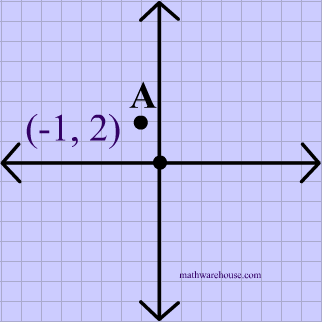
Problem 3
Reflect the point $$ (3, -4 )$$ over the origin.
$ r_{origin} (3, -4) \\ (3, -4) \rightarrow (\red -3, \red- -4) \\ \boxed{ (-3,4) } $
Practice Problems II
These practice problems involve reflections over a point that is not the origin like example 5 above.
Problem 2.1
Reflect the point $$ (3,4 )$$ over the point $$ \red { ( 1, 3 )} $$.
There is no simple formula for a reflection over a point like this, but we can follow the 3 steps below to solve this type of question.
First, plot the point of reflection, as shown below.
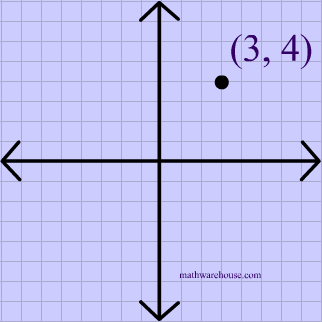
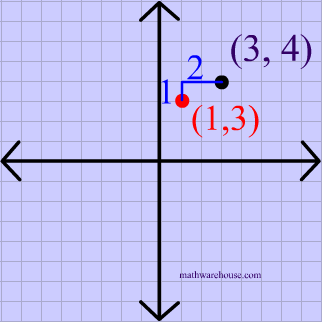
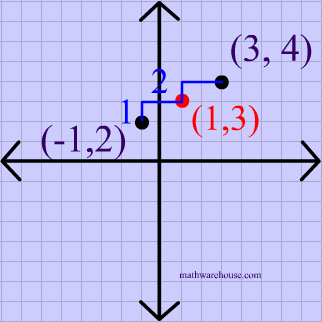
Problem 2.2
Reflect the point $$ (-5,3 )$$ over the point $$ \red { ( -2, 4 )} $$.
There is no simple formula for a reflection over a point like this, but we can follow the 3 steps below to solve this type of question.
First, plot the point of reflection, as shown below.
